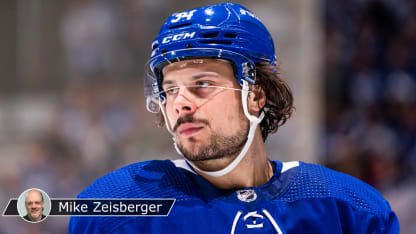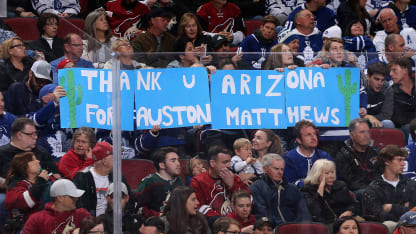Just ask Cutter Gauthier.
The left wing is No. 3 in NHL Central Scouting's final ranking of North American skaters eligible for the 2022 Upper Deck NHL Draft, and is expected to be selected at the top of the first round at Bell Centre in Montreal on Thursday (7 p.m. ET; ESPN, ESPN+, SN, TVAS).
Born in Skelleftea, Sweden, Gauthier moved with his family to Scottsdale, Arizona, when he was 2 years old. His path mirrors that of Matthews, the forward chosen No. 1 by the Toronto Maple Leafs in the 2016 NHL Draft who was born in San Ramon, California, and moved with his family to Scottsdale when he was 2 months old.
For Gauthier, Matthews winning the 2021-22 Hart Trophy voted as the NHL most valuable player is an added incentive for young players in the Sun Belt. It shows that they, too, can aim to be the best in the game one day.
"I think it's pretty cool," Gauthier said. "It shows it doesn't really matter where you're from as long as you work hard. And if you work hard every single day, good things will happen. Especially Auston Matthews. He was born in California and played most of his hockey growing up in Arizona. And that's pretty cool.
"There's not many resources out there, especially at a young age, if you want to play in the National Hockey League, whereas if you're in Michigan or out east or in Canada. So, it's pretty cool to see how all his hard work has paid off. It's awesome to see."
On June 21, Matthews was also named the recipient of the Ted Lindsay Award, given annually to the most outstanding player as voted by members of the NHL Players' Association. The only other United States-born player to win either the Hart or Lindsay was Chicago Blackhawks forward Patrick Kane, who captured each in 2015-16.
"He was the guy I grew up watching, so maybe this generation of kids will look at me the same way," said Matthews, who had 106 points (60 goals, 46 assists) and also won the Rocket Richard Trophy for the second season in a row as the NHL's top goal-scorer. "The thing is, where I came from never really was a thought for me when it came to playing. I loved doing it and had fun doing it.
"If kids from markets where I came from look at my success as a way to drive them, that's cool. As long as they enjoy it."





